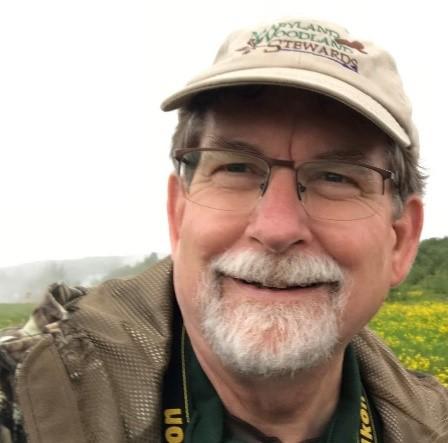
As I am about to retire after 32 years as a University of Maryland extension forester, I want to take this opportunity to share some thoughts with you, the readers of Branching Out, and others who have benefited from the Woodland Stewardship Education program. Below are some the big points I have endeavored to share from over the years.
First, take steps to be a good steward of natural areas around your home. Your woods are dynamic and changing even if you do nothing at all, as succession results in some trees dominating and others being lost. Are vines bringing down some trees or invasive plants crowding out natives species? Take an active role in directing succession by planting, cutting or killing plants to favor others. If you decide to do nothing and let nature take its course, let it be an informed choice.
Second, get involved with your neighbors where you share mutual interests. Wildlife is a primary interest of most people, but it does not recognize boundaries, so the more you can do in collaboration with friends and neighbors, the more wildlife benefits. You can influence decisions on a larger scale, by doing such things as getting involved with other landowners to effect change in the community and state level actions that affect forests.
Third, support the forest industry, for it is an essential partner to private woodland owners, to make forest and wildlife management economically possible. Forests will need tending to maintain forest health, enhance wildlife habitat, or realize other objectives. Assistance for harvest planning is available from extension, state forestry agencies, and private foresters. While there is a current movement to encourage tree planting, those trees will need care in the future. A viable forest industry is needed to facilitate this.
Fourth, continue to take advantage of the learning opportunities available from our program and other sources. Educational programs and assistance are available for two broad areas of forest ownerships: Smaller acreages from 1 - 9 acres, and larger, more traditional forest properties over 10 acres. Eighty-five percent of woodland ownerships in Maryland are from 1-9 acres. “The Woods in Your Backyard” program is a great resource for owners of small parcels. Many of you with larger properties have taken advantage of online courses and programs targeted to larger acreage owners.
Fifth, never underestimate your part in shaping Maryland woodlands and your contribution to their health and their future. Many citizens think government entities own most of the woodland in Maryland so they feel insignificant in the landscape, but not so. About three-quarters of Maryland’s woodlands are privately owned, so their future depends not on the government but the individual forest stewardship decisions of over 150,000 Maryland citizens just like you.
Enjoy, investigate and use your land with your family to learn about nature and natural resource management. Your forest can be an outdoor classroom, a gym, a source of entertainment, a family gathering place, a hunt club, or whatever you want to make it. Use it to better understand ecological principles that help answer basic question like: Why do trees grow where they do? Why are wildlife only found in certain places? The list of possibilities is endless.
Be a lifelong learner. This is what I plan to do as I move on! It has been my pleasure to do my small part and to share my love of forestry with each and every one of you. Blessings as you continue to provide stewardship to Maryland’s woodlands.